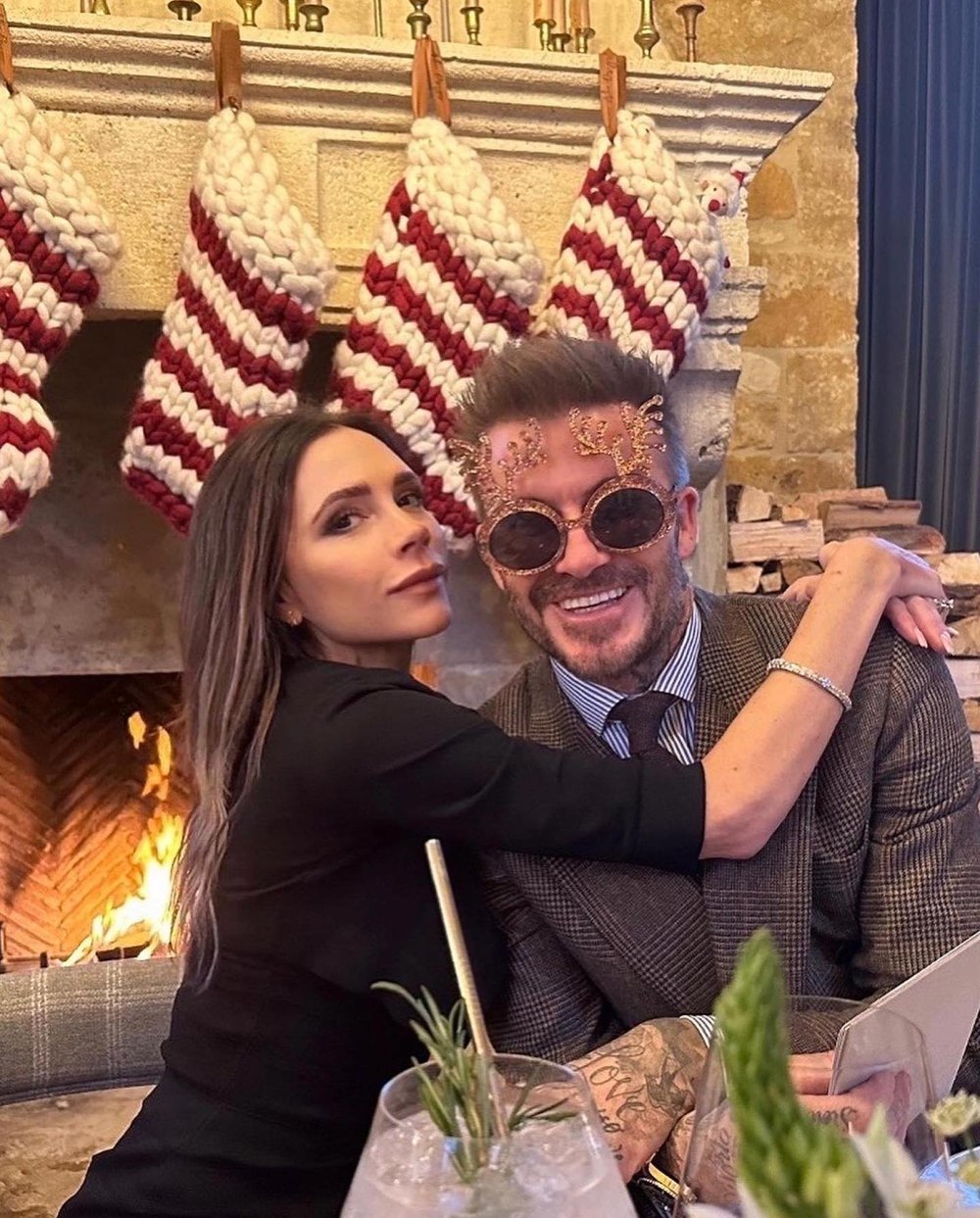
Victoria and David Beckham. Courtesy of Victoria Beckham/Instagram
“Should old acquaintance be forgot / And never brought to mind” — wait, what does that even mean?
Every New Year’s Eve brings about many attempts at singing the one song everybody associates with the holiday: “Auld Lang Syne.” Few partygoers, however, know the words, and fewer still understand what “auld lang syne” even means. If your resolution going into 2024 was to not start the year off ignorant of the song’s history, allow Us Weekly to help you keep that promise.
Keep reading to learn the tune’s meaning and find a few notable covers to add to your playlist.
What Does “Auld Lang Syne” Mean?
“Auld Lang Syne” literally means “old long since,” which roughly translates to “days gone by.” When you sing, “Should old acquaintance be forgot / And never brought to mind,” you’re rhetorically asking, “Should old friends be forgotten?” Should the old days we’ve experienced be left behind, or, should we remember them and toast them with a “cup o’ kindness,” as mentioned later in the song?
The tune is essentially a drinking song about fond remembrance of the good ol’ days, which is appropriate to sing at the start of a new year, when the chance to make some new “good ol’ days” is just around the corner.
The History of “Auld Lang Syne”
“Auld Lang Syne” is attributed to Robert Burns, the national poet of Scotland. In 1788, Burns wrote down the lyrics to “Auld Lang Syne” and sent them to the Scot Musical Museum, a collection of traditional folk music of Scotland. Burns wrote that the words were taken “from an old man’s singing.” While the song has long been associated with Burns, Encyclopedia Britannica notes that poets including Sir Robert Ayton and Allan Ramsay wrote works that had similar lines to “Auld Lang Syne.” These works are cited as Burns’s inspiration, while the credit for “Auld Lang Syne” remains solely his.
The melody is credited to Geroge Thomson, who put it to Burns’ words in 1799. Like Burns’ lyrics, Thomson’s melody has been linked to prior works, including that of William Shield (who used a similar tune in 1782) and volume four of the Scot Musical Museum in 1792, though this version didn’t use the “Auld Lang Syne” lyrics. Thomson paired the music and words together, and thus the song we’ve come to know as the New Year’s Eve anthem was born.
As for how it became associated with the holiday, credit Guy Lombardo. The Canadian-born bandleader would lead his group, the Royal Canadians, in playing “Auld Lang Syne” on his popular radio broadcasts. Lombardo made the successful leap to television, and for more than 30 years, he and the Royal Canadians would play “Auld Lang Syne” on New Year’s Eve for viewers at home. Other bandleaders followed, including Jack Parnell (who the Muppets and Vincent Price lampooned on The Muppet Show), further spreading the association between New Year’s Eve and “Auld Lang Syne.”
The Lyrics to “Auld Lang Syne”
Since this is a song adapted from a Scottish poem and based on Scottish folklore, there are a few Scottish words in the song.
Should old acquaintance be forgot,And never brought to mind?Should old acquaintance be forgot,And auld lang syne.
[Chorus]For auld lang syne, my jo,For auld lang syne.We’ll take a cup o’ kindness yet,For auld lang syne.And surely ye’ll be your pint-stowp!And surely I’ll be mine!And we’ll take a cup o’ kindness yet,For auld lang syne.
[Chorus]For auld lang syne, my jo,For auld lang syne.We’ll take a cup o’ kindness yet,For auld lang syne.We twa hae run about the braesAnd pu’d the gowans fineBut we’ve wander’d mony a weary footSin auld lang syne.
[Chorus]For auld lang syne, my jo,For auld lang syne.We’ll take a cup o’ kindness yet,For auld lang syne.And there’s a hand, my trusty fiereAnd gie’s a hand o’ thineAnd we’ll take a right gude-willy waught,For auld lang syne
[Chorus]For auld lang syne, my jo,For auld lang syne.We’ll take a cup o’ kindness yet,For auld lang syne.
Notable Covers
Mariah Carey
While the song’s lyrics still capture the bittersweetness of the holiday, Carey turns her version into a club banger.
Bruce Springsteen and the E Street Band
Taken from Springsteen’s New Year’s Eve concert at the Nassau Coliseum in 1980, this rendition is a rockin’ version that shows that you don’t need words to celebrate.
The Platters
New Year’s Eve is a chance to dress up, sip champagne and feel classy. One of the best ways to do so is to put on The Platters, whose version of “Auld Lang Syne” is pure magic.
Jimi Hendrix
In December 1969, Hendrix recorded an EP with bassist Billy Cox and drummer Buddy Miles. The trio practiced in extensive rehearsals for an appearance at the Fillmore East. To commemorate what was to be the start of a new chapter (Hendrix would die in September 1970 at age 27), the guitar legend recorded a medley of holiday songs, including “Little Drummer Boy,” “Silent Night” and “Auld Lang Syne.” While revisiting Christmas music on December 31 might seem a little gauche, Jimi Hendrix’s guitar rendition of “Auld Lang Syne” is worth it.








